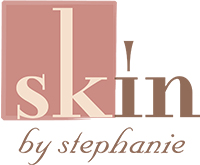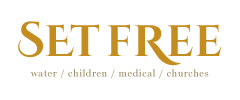Our experience with light is usually in the form of white light, which is the sum total of all the wavelengths. Light therapy, which is also known as phototherapy and photodynamic therapy, separates different bands of light within that visible spectrum, as well as near-infrared (NIR) light, and sometimes UV (ultraviolet) light and focuses them on particular areas of the body for therapeutic purposes.
An important element of light therapy is that it works at the cellular level. Most treatments and medications are designed to treat (or mask) symptoms, or rely on cuts, punctures, or other similar techniques. Light therapy however, works by stimulating beneficial processes within cells, causing the body to naturally heal itself.
Light therapy is very flexible in its uses. It has many cosmetic benefits, and can also effectively treat a variety of serious dermatological conditions.
An important thing to know about light therapy is that different bands of light instigate different physiological effects on the body. For this article, we’ll look at therapies that rely on three kinds of light: red, blue, and narrowband UVB light.

Red Light Therapy
Also called low-level light therapy (LLLT) and photobiomodulation (PBM), red light therapy harnesses the power of light within a band of wavelengths ranging from 630 nanometers (nm) to 700nm (red light), and from 810nm to 850nm (NIR light). The term “red light therapy” is often used to apply to both red and NIR wavelengths.
These wavelengths penetrate the skin’s surface and reach varying depths of the skin, muscle, and even bone. The longer the wavelength (and the higher the number), the deeper it penetrates. A few wavelengths in these bands are especially powerful: 630nm, 660nm, 810nm, 830nm, and 850nm. You can learn more about the unique properties of each of these on the PlatinumLED Therapy Lights website.
The magic of red light is its stimulating effect on cells. As thousands of studies and scientific reviews have shown, red light excites mitochondria, which are tiny organelles inside cells that are responsible for creating energy.
These revved-up mitochondria will, in turn, produce more adenosine triphosphate (ATP), which are molecules known as the “building blocks of energy.” Increased ATP leads to a host of physiological benefits related to healing, including cell rejuvenation and reduced inflammation.
Increased cellular health then leads to a plethora of positive aesthetic benefits. It increases collagen production, helps skin remain youthful and elastic, and even shows promise for reducing wrinkles (more on this in a moment). But the benefits aren’t just skin-deep.
In fact, red light therapy has been studied as an effective treatment for a wide range of health conditions, including wound healing, muscle recovery, and reducing inflammation, just to name a few. Thus, it is far more than merely a cosmetic remedy; it is also a therapeutic healing remedy.
As a practice, red light therapy is quite low-intensive. It involves sitting, standing, reclining, or—if you’re up for it—exercising in front of the device. Typically these are panels fitted with light-emitting diode (LED) bulbs that produce red light in the aforementioned wavelengths.
There are also handheld devices that can be aimed at smaller areas of the body, such as the face. Some devices come in the form of hard masks that you wear for a session while your dermis is stimulated by direct red and NIR light.

Blue Light Therapy
Blue light is among the shortest, highest-energy wavelengths, ranging between approximately 380nm and 500nm. It does not penetrate as deeply as red light but is still powerful. Its antimicrobial effect makes it an effective treatment for some acne—specifically, it helps eliminate the bacteria called Propionibacterium acnes, which causes mild to moderate acne.
Because blue light is most often used for facial treatments, the devices tend to be smaller and more portable. They include masks, wands, and bulbs that you aim at the problematic area for short, consistent treatments.
A number of dermatologists offer blue light treatment as a popular method for clearing up acne. Like photodynamic therapy that uses red light, blue light-based phototherapy treatments are non-invasive, gentle on the skin, and pain- and drug-free.
Narrowband UVB Therapy
The third kind of photodynamic therapy method uses what is called narrowband ultraviolet light B (NB-UVB). Normal broadband UVB wavelengths (such as those emitted by the sun) are in the 280nm to 330nm range, and some of these are harmful and damaging to the skin.
In contrast, narrowband UVB provides the beneficial wavelengths within that band (mostly the 311nm to 312nm) without as many risks. This permits treatment at higher intensities and for longer periods of exposure to maximize the benefits of phototherapy without excessively damaging the skin.
At-home NB-UVB devices are usually in the form of wands, which the user places over the affected area for short, consistent sessions. It’s best to consult a dermatologist before using at-home UVB devices.
Clinical devices include wands as well as “cabins,” which resemble upright tanning booths. A user stands inside the cabin and is blasted with light for short periods of time. This allows a more full-body experience as opposed to treating small areas of the skin.
Skin and Dermatology-related Conditions Treated with Photodynamic Therapy
As backed up by hundreds of studies, photodynamic therapy can effectively treat a wide variety of conditions, from acne and eczema to wound healing.
Light Therapy for Acne
Easy to spot but hard to eliminate, acne is a skin condition that results from a build-up of oil and dead skin cells that clog up the hair follicles in the skin. Typically, acne affects the face, chest, back, and shoulders, and can take many forms: from tiny white, black, or pink pimples; to white or yellow pus-filled lesions that either reach the skin’s surface or lie deep beneath it.
While a variety of factors can exacerbate acne, such as hormones, diet, and stress, one of the main causes is bacteria. Getting rid of that bacteria can help clear up and prevent this annoying and embarrassing skin condition.
Phototherapy for skin diseases has been effective to treat acne. Here are some way:
Blue Light Treatments: According to the American Academy of Dermatology, blue light shows great promise in treating acne because of its antimicrobial effects.
Several studies confirm this, such as one published in 2011 by researchers from the University of Missouri Healthcare. Thirty-three people with mild to moderate facial acne participated in the study. After self-administering blue light treatments twice daily for eight weeks in combination with certain skincare products, more than 90 percent of participants reported noticeable improvements in skin appearance, clarity, texture, tone, and smoothness.
Red and Blue Light Treatments: Because red light penetrates more deeply into the skin, it is believed to mitigate the production of sebum (the oily substance that clogs pores) and reduce inflammation. It also helps the body recover from inflammation in general, and keeps skin cells functioning at a high level so the body bounces back and can fight acne and other bacteria more effectively.
Examining this was the focus of a 2015 meta-analysis of photodynamic treatments for acne that was published in the Indian Dermatology Online Journal. The researchers found that, of the different kinds of photodynamic therapy methods, blue and blue-red therapy proved the most effective for treating mild to moderate inflammatory acne lesions.

Light Therapy for Wrinkles and Fine Lines
Of all the visible signs of aging, wrinkles and fine lines are some of the most obvious. They are brought on by exposure to UV light, which breaks down the collagen and elastin fibers that make skin taut and toned. Restoring a youthful appearance requires bumping up the skin’s collagen production—and that’s exactly what LLLT is good at.
Numerous studies have shown that when used consistently, red light therapy can reduce the appearance of fine lines and wrinkles. A 2009 study published in the Journal of Investigative Dermatology found that red light therapy sessions seemed to reduce the depth and severity of lines and wrinkles in 94 percent of participants.
Light Therapy for Psoriasis
Thought to be an immune system issue, psoriasis is a skin condition that causes itchy and red scaly patches on the knees, elbows, trunk, and scalp. Psoriasis is cyclical: It flares up when, for whatever reason, your immune system is compromised and goes into overdrive, attacking healthy cells. Psoriasis never goes away but can clear up in response to treatments.
Narrowband UVB Treatments: The National Psoriasis Foundation confirms that phototherapy is an effective way to treat psoriasis. This is especially true of UVB light, which penetrates the skin and can slow the growth of affected skin cells. And while you can absorb UVB light from natural sunlight, narrowband UVB treatments do not contain the harmful, cancer-causing UV rays that are present in sunlight.
These treatments may take place in special cabins with fluorescent lamps emitting specific wavelengths of ultraviolet light; or by way of lamps or wands that focus treatment on specific parts of the body.
Narrowband UVB does seem to work, as shown in a 2017 metastudy published by Germany’s Institute for Quality and Efficiency in Health Care. Out of 100 patients with psoriasis who underwent NB-UVB treatment, up to 90 experienced an improvement in symptoms, or symptoms disappeared completely for a period of time.
Among phototherapy treatments, narrowband UVB is favored over broadband UVA (also used to treat psoriasis) because they don’t contain the harmful elements of sunlight, and are not linked to skin cancer. Overuse of narrowband UVB can cause sunburns, however, so it’s important to only use these treatments under the guidance of a medical professional.
Red Light Therapy: Studies have shown that red light therapy, particularly the 830nm NIR wavelength, is an effective psoriasis treatment. One small 2010 study involved nine patients who underwent a combination of 830nm with 633nm (red) wavelengths in two 20-minute sessions over four or five weeks. At the end of the six-month follow-up period, patients’ skin was from 60 percent to 100 percent clearer than it was before receiving treatment.
One distinct advantage of LLLT over any ultraviolet treatment is that it does not involve radiation, which means red light therapy for psoriasis is perfectly safe with no risk involved.
Excimer Laser: This is a UV laser, similar to the kind used in eye surgery, that’s been proven effective at treating chronic, localized psoriasis in mild to moderate cases, particularly around the scalp. Although treatments with an excimer laser are FDA-approved for this purpose, there isn’t a lot of research to confirm their long-term efficacy.

Light Therapy for Vitiligo
Vitiligo is a condition that causes patches of skin to lose color. These patches appear when melanocytes, or cells that produce melanin (skin pigment), die off due to attacks from the immune system. Vitiligo can affect patients of any gender, age, or ethnic background.
Narrowband UVB Treatment: This is the most common treatment for vitiligo, as it reduces the immune system’s attack on melanocytes. Research has shown that the most effective wavelength is 311nm. Not only is it considered safe in terms of minimizing the risk of burns, skin cancer, or other radiation side effects; it also seems to stimulate dormant skin melanocytes and may help balance the skin’s immune system, preventing flare-ups.
Research bears this out, such as one 2017 metastudy conducted by researchers from Korea. An analysis of 35 studies that collectively involved 1,428 patients with vitiligo revealed that a mild response to NB-UVB phototherapy occurred in 74 percent of patients at six months, and 75 percent of patients at 12 months. A noticeable response was achieved in 19 percent of patients at six months and 36 percent of patients at 12 months.
Red Light Therapy: There are few studies on the efficacy of red light therapy for vitiligo, although a few are in the pipeline. Red light shows some promise in treating the condition since it seems to stimulate melanocyte migration and proliferation. A 2019 study by researchers from Taiwan found that a low‐energy helium‐neon laser (red light at 632.8 nm) stimulated melanocyte stem cells and was effective in “marginal repigmentation in vitiligo.”
Light Therapy for Eczema
There are a variety of eczema types, all of which cause the skin to become itchy, inflamed, and/or have a rash-like appearance. More than 30 million Americans have some sort of eczema, and the condition can appear at any age, with symptoms ranging from mild to severe.
Although the exact cause of eczema is unknown, scientists believe it is likely a combination of genes and environmental triggers. At its root is inflammation, which occurs when the immune system is triggered to fight an external irritant or allergen.
Narrowband UVB: Most phototherapy treatments for eczema utilize UVB wavelengths since these inhibit the inflammatory response associated with eczema, while also influencing cell division.
Phototherapy treatments for eczema tend to be very short, from a few seconds to minutes, and they generally take place inside a cabin outfitted with lights. Again, it’s important to seek professional guidance with UVB therapy to avoid sunburn-like burns.
Red light therapy: Red light therapy may not be the most common treatment doctors recommend for eczema—but it is worthy of serious consideration.
One of the primary health benefits of LLLT is its effectiveness at reducing inflammation, whether in the context of muscle recovery, arthritis, or immune system conditions like fibromyalgia.
Because eczema is an inflammation-based condition, red light therapy has the potential to provide relief from symptoms. Moreover, it is completely radiation-free, which eliminates the risks of burns that can result from unguided and/or overuse of UVB therapy.
Because it heals at the cellular level, LLLT is also effective for healing wounds. This makes it an excellent therapeutic choice for severe cases of eczema where lesions and wounds have developed from over-scratching affected skin.

Choosing a Light Therapy Device For Dermatology and Beyond
If you’re considering self-treating with phototherapy at home, consult with a dermatologist before purchasing a device. This is especially important with UVB devices because of the potential risks involved.
In-home devices include wands and masks, which target small areas of the body; and bulbs and light panels, which offer greater coverage, higher power, and often significantly quicker results. Consider the total area you want to treat, and weigh that against the treatment area offered by the device, factoring in how many sessions it will take you to treat the entire area.
PlatinumLED Therapy Lights
One of the benefits of PlatinumLED Therapy Light panels is that they are useful for treating just about all of the dermatology conditions mentioned in this article. This allows users more flexibility with one product—say, treating acne during one session, and another condition the next.
PlatinumLED Therapy Lights are also customizable -they offer the widest array of preferred red and NIR wavelengths of any device on the market.
Whatever your need, condition, or preference, these panels provide powerful, safe, and customized treatment of your dermatological issue, every time.


